When you stand on the skywalk overlooking the BEAR SANCTUARY Ninh Binh, you see a paradise for bears that have a lived a very difficult life. If you are lucky, you can see the 46 bears here playing with a variety of toys, trying to crack open a tricky container holding tasty food, strolling through the bushes or simply hanging out in hammocks, pools or under sun roofs. In the accompanying exhibition and from the guides in the sanctuary, you learn about the bears personalities, favorite foods and quirks. We genuinely have never seen any enclosure for captive animals that was designed so thoughtfully and is so species-appropriate. The team works tirelessly to provide a good life for these amazing animals, but unfortunately there is a very sad reason for all of this.
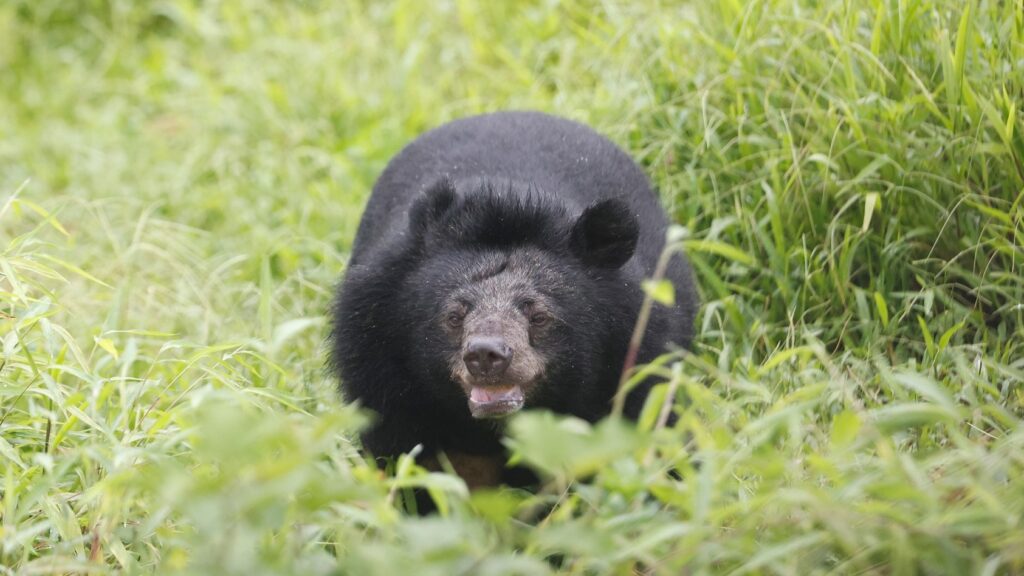
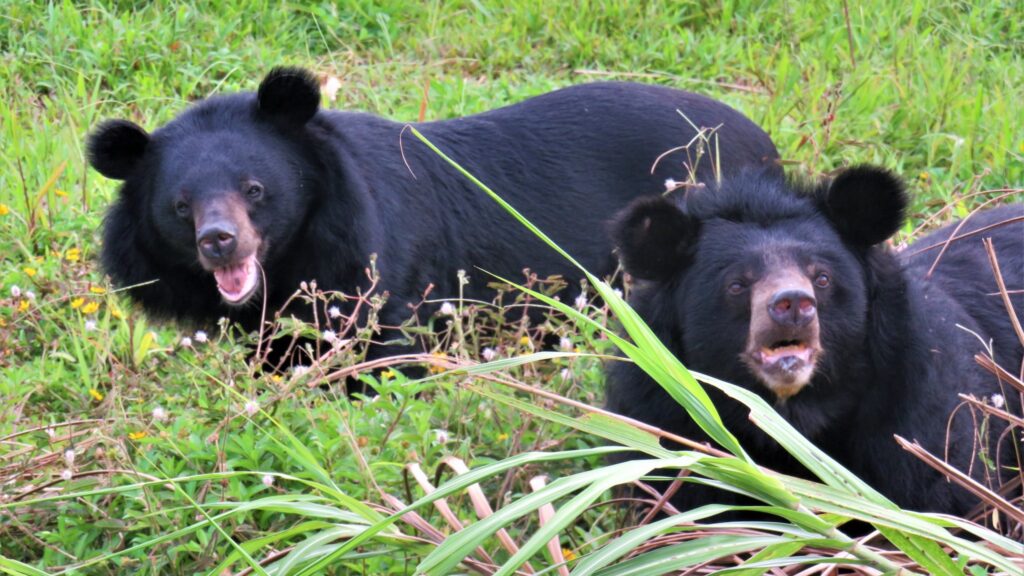
Bears suffer in many ways
Along our journey, we have visited several bear sanctuaries and heard all kinds of stories about their past lives. In Armenia, we visited a sanctuary for brown bears that had been kept as pets in basements of rich men associating power with keeping these wild creatures at home. Some of these bears were blind and had no teeth left because they were mostly fed with candies and soda drinks. In Pakistan, we saw black bears, whose teeth and claws were removed to turn them into harmless “dancing bears” or other show animals.
But here in Vietnam, we learn about an industry that is much larger and even crueler than all of this: the farming of bile bears. In traditional Asian medicine, the bile (or otherwise known as gall) of bears is claimed to have all kinds of medicinal effects. Much of its uses have no scientific background, but are widespread especially in China, similar to the use of Pangolin scales.
However, in the case of Asiatic black bears (Ursus thibetanus), also called moon bears, there is some actual science behind it, as they produce especially large amounts of ursodeoxycholic acid (UDCA) in their bile, a substance that can help with liver issues. Therefore, for centuries, black bears were hunted to take out their gallbladders and extract the bile to make all kinds of medicine. However, as the demand for bear bile grew in the 20th century, hunting down wild bears could not provide enough bile for the industry anymore.
The horrible fate of bile bears
So, in the 1980s people started catching bears alive to regularly extract bile instead of killing them and only ‘harvesting’ bile once. Within a few decades, this practice exploded in China, Vietnam, South Korea, North Korea, Japan, Laos and Myanmar. Nowadays, thousands of bears live in bile farms across East Asia.
When Jeremy, the communications team manager of the BEAR SANCTUARY Ninh Binh, tells and shows us what is going on in these farms, we cannot believe our ears and eyes. The bears are kept in cages which are barely larger than themselves constructed only of metal bars, often including the floor itself. They can hardly move, therefore they injure themselves accidentally or out of agony, while they are fed with any sort of cheap food available.
Because the industry grew so quickly, most farmers have no idea what they are doing. The conditions they keep these bears in lead to disabilities, diseases and suffering. And on top of that, the bile of these farmed bears is extracted regularly, sometimes even daily, by the same people, who have no idea what they are doing. There are several methods, all of them cruel, and if performed incorrectly, they are often deadly or strongly damage the bear.
Disclaimer: The practice of bile bear farming is truly one of the worst practices we have encountered on our journey on an unbelievable scale, but we will not get deeper into the details. However, if you would like to know more, FOUR PAWS, the NGO running the BEAR SANCTUARY Ninh Binh, as well as other NGOs like Animals Asia and Free the Bears have all the information available on the topic.
The rise and ban of bile farming
After bile bear farming first took off in China and North Korea in the 80s, it only really became widespread in Vietnam in the decade later. A study by Free the Bears and Animals Asia found that the number of bile bears skyrocketed from 500 in 1997 to 4300 in 2006. This means that 600 bears were caught in the wild and put into a farm every year during this period. This study estimates the total number of bears that were killed or caught at 1000 per year, mainly due to the practice to kill adult females that are with cubs to then take the cubs to bile farms.
Due to the horrible conditions in the bile farms, catching wild bears is basically the only way to get new bile bears as most bears can never leave their solitary cages, making breeding impossible.
In 2005, the Vietnamese government realized the issues with this practice and prohibited bear bile extraction. However, they had no idea what to do with the existing 4000 bears inside the bear farms. 4000 bears need a lot of space, care and food that the government could not provide. So, they allowed farmers to keep their bears, under the condition of registering and chipping them as well as putting a stop to bile extraction.
But even that turned out to hardly be realistic. Making sure hundreds of farms suddenly stop bile extraction is logistically almost impossible, especially when the market is booming, and it also does not change the horrible conditions most bears were kept in.
International NGOs step in
This was the moment when international NGOs stepped in to offer their help. After years of advocating for the end of bile farming, now was the time to provide a better life for these bears. They started building bear sanctuaries, where the bile bears can live in appropriate enclosures, as well as receive good medical care and food that suits their natural diet. Today, there are three large sanctuaries in Vietnam: The BEAR SANCTUARY Ninh Binh in Central Vietnam run by the Austrian NGO FOUR PAWS, the Tam Dao Rescue Centre in North Vietnam Run by the NGO Animals Asia based in Hong Kong and the Cat Tien Bear Rescue Centre in South Vietnam run by the Australian NGO Free the Bears. Together, they have offered hundreds of bears a better life.
The Bear forest
The BEAR SANCTUARY Ninh Binh is the newest of them and currently expanding to house even more bears. Jeremy tells us that there are around 220 bears in over fifty farms in Vietnam and their goal is to rescue them all. “This is a race against the clock as most bears on bile farms live short lives due to malnutrition, diseases and organ issues,” Jeremy explains. Out of the 4300 bile bears in Vietnam in 2006, many hundreds were rescued within the last 18 years, but most of them still died within this period.
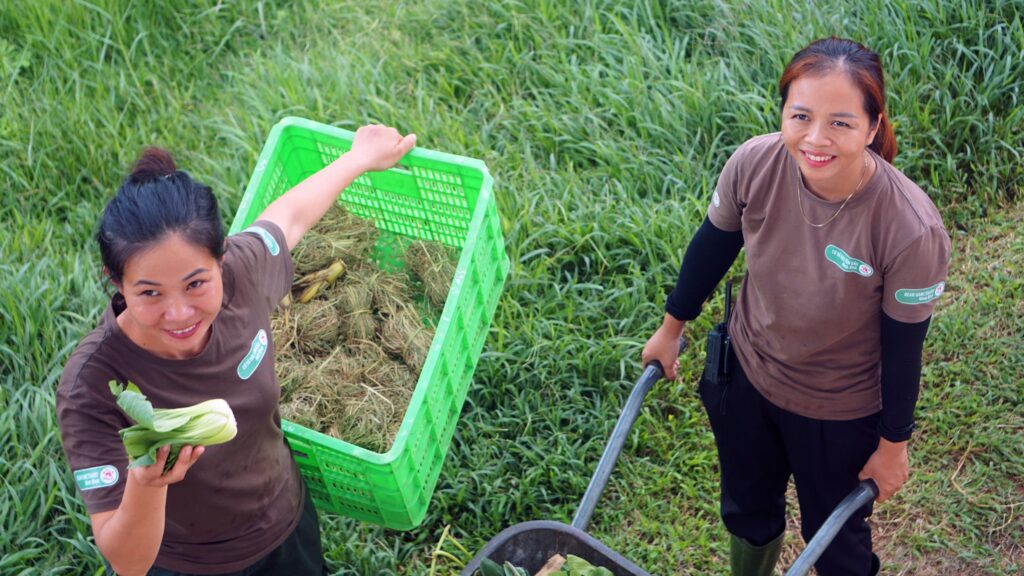
FOUR PAWS puts in all possible effort to make the life of their bears as good as possible. In German, they call the BEAR SANCTUARY Ninh Binh ‘Bärenwald’, bear forest, and it is a fitting name. The large enclosures are full of bushes and trees to resemble natural bear habitat as much as possible. FOUR PAWS also has two top-tier veterinarians constantly on-site to provide the best possible medical care and the team of caretakers that caters to the requirements, preferences, restrictions and personality of each single bear.
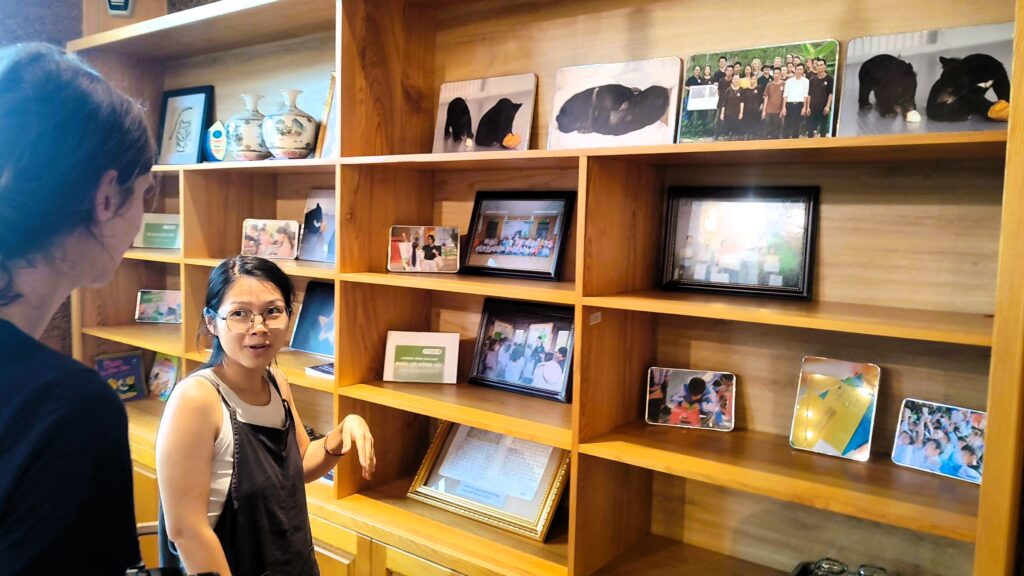
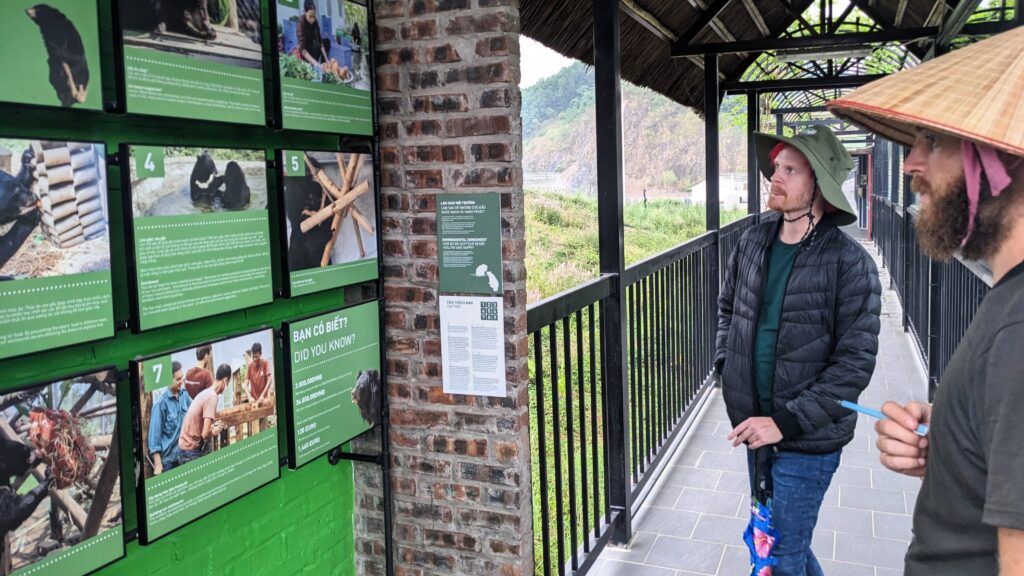
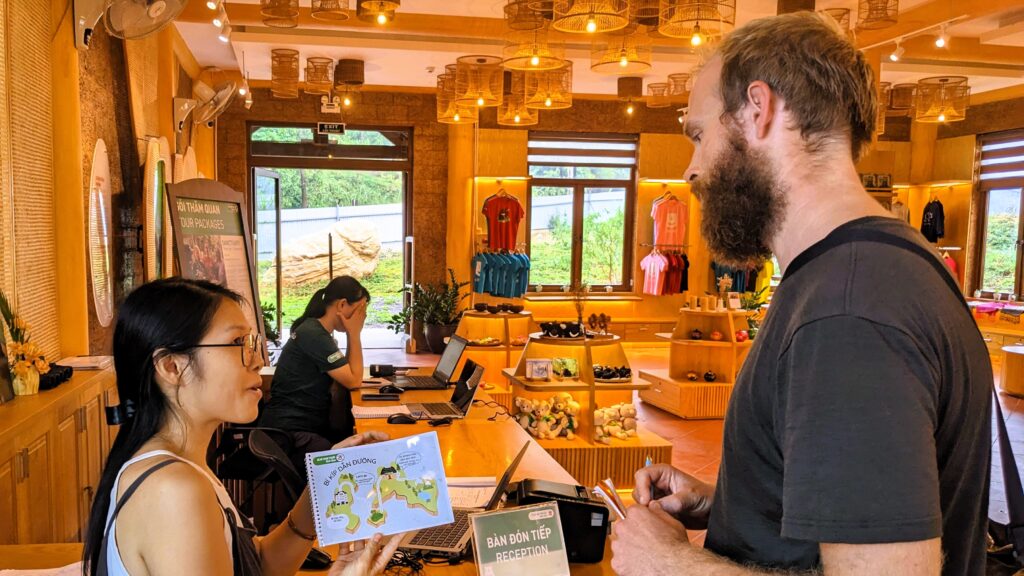
But the work does not start when the bears arrive at the BEAR SANCTUARY Ninh Binh, but months before. Jeremy tells us that it can take months or years to rescue a bear starting by convincing the owner and subsequently filing a lot of paperwork before thorough health checks, the careful transport to the center and a month-long quarantine. Contacts with the owners are often complicated by big media attention accompanying each rescue, which many owners are not comfortable with.
No strongholds for wild bears
The work of FOUR PAWS doesn’t stop in the center either. While bile farming is a fading practice in Vietnam, the traditional medicinal use of bear bile is still an issue for wild bears in Vietnam. The aforementioned study by Animals Asia also concludes that ‘there are no strongholds for bear populations’ left in Vietnam, only a few scattered individuals or small groups. While the main blow to Vietnam’s bears in the wild was their catching for bile farms from 1996 to 2005, illegal poaching of bears has continued afterwards and won’t stop until all – also illegal – bile farms in Vietnam and neighboring countries are shut down. Because the farmers can’t breed new bears, they rely on bears from the wild to keep their farms running. And in China alone, there were still over 100 large bile farms with 10.000 bears in 2017, even run by large medical companies. It doesn’t seem like China plans to ban bile farming anytime soon, so these farms will need new bears.
While there is no possible justification for this practice anyway, it is important to mention that ursodeoxycholic acid (UDCA) is also produced synthetically and much cheaper than through bear farming today. There are also plenty of herbal alternatives. This is the message that FOUR PAWS delivers to the communities and schools around the center by organizing educational programs about biodiversity conservation and animal welfare since 2014.
A sad story with hope on the horizon
While we loved seeing the bears and talking to Jeremy, we can’t help but leave the BEAR SANCTUARY Ninh Binh deeply saddened. Before coming here, we never heard of bear bile use and especially farming. The more we learn about it and especially the more footage we see from bile farms, the more shocked we are that thousands of bears live like this and that the Chinese government apparently still considers this acceptable.
But we also leave with optimism. We saw with our own eyes that these bears can still have a chance to live long and happy lives. And at least in Vietnam the numbers speak for themselves. Thanks to the work of FOUR PAWS and many other players, most Vietnamese are not interested in bear bile anymore or switched to synthetic alternatives. As so often, economic realities, i.e. fading demand, sealed the fate of bile farming in Vietnam and the three NGOs work hard to get as many bears as possible out of the farms and into their sanctuaries to give them at least some good years.
Now we just hope that the wild bears of Vietnam will also recover and not be trafficked to China, where bile farming is still thriving. Our encounters with bears and their protectors so far have always proved how special people’s relationship with them is and surely, the most amazing way to observe a bear is always free within their natural habitat, the wild.
